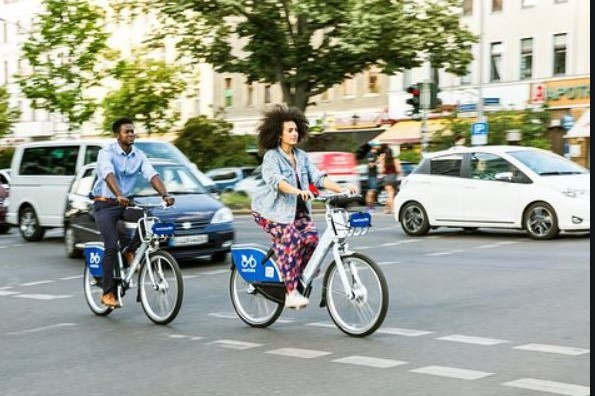In 2017, 74% of working people who said they had to travel to their place of work used their car, 16% took public transport and 8% used soft modes of transport (6% on foot and 2% on bicycle) according to INSEE.
As of January 1, 2017, 26.8 million working people aged 15 or over live in France excluding Mayotte. Among them, 6.7% (or 1.8 million) say they do not travel to work. Others travel very long distances.
The car is the preferred mode of transport for going to work regardless of the distance traveled: 74% of working people use it, or 18.1 million people. In addition, 16% use public transport (i.e. 3.9 million active workers) and 8%, i.e. 2.1 million active workers, use soft modes of transport such as walking (6%) and cycling (2%).
For distances of less than 5 kilometers, the car still accounts for 60% of home-work trips, even if its share is decreasing in favor of soft modes. In the case of short distances, which are more frequent for residents of central municipalities, employees more often go to work on foot or by public transport, while executives more often use bicycles or public transport.
In large cities, it is Grenoble and Strasbourg that residents use soft modes the most to go to work, especially cycling (17%).
Between 2015 and 2020, the use of the bicycle to get to work increased by 2 points in the central municipalities, reaching 6% at the beginning of 2020. The use of public transport increased slightly in the centers of the areas of attraction of cities.
In the Grand Est
Almost a third of the working population in the Grand Est work within 5 km of their home, and farmers, artisans and traders are more often in this case.
Likewise, women make short trips to work more frequently than men, and walk somewhat more often. In the Grand Est, walking and cycling are used more, while public transport is less. Between 2015 and 2019, the latter still lose ground compared to the car, contrary to the trend observed in provincial France.
In the Grand Est region, 32.6% of employed workers work within 5 kilometers of their home (by road), i.e. 1.1 points less than in provincial France (mainland France excluding Île-de-France) . While short home-work trips are slightly less numerous in the region, very short trips (2 km maximum) are as frequent in the Grand Est as in provincial France and concern more than 15% of the employed.
Walking and cycling
In the Grand Est region, as elsewhere, the car (including for carpooling) is the preferred means of travel to get to work, even for short distances: 64.6% of trips of at most 5 km are do so in the region, 2.1 points less than in provincial France. “Soft” modes of travel (walking or cycling) are indeed more frequent in the Grand Est: they represent more than a quarter of short home-work trips, ie 3.4 points more than in provincial France. Among people making very short trips, nearly two in five walk or cycle to work in the Grand Est, which is 5 points more than the average.
The bicycle is particularly present in the region: for short trips, 6.9% of commuters in the Grand Est use it, a third more than the average for provincial France.
–


